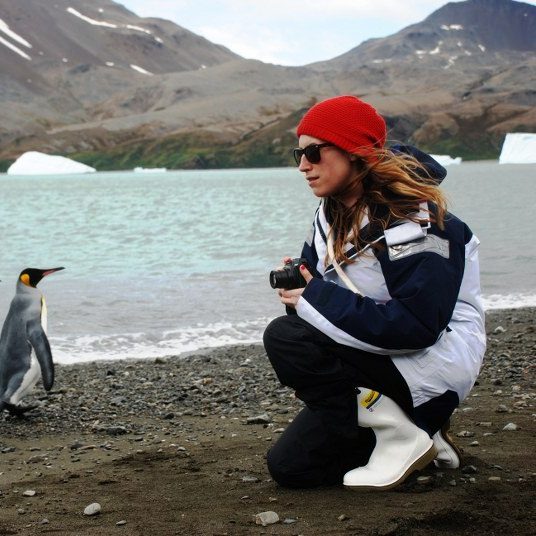
Once famed for their schnitzels and sausages, Viennese chefs are embracing vegan and vegetarian cuisine, with harvests coming straight from the city farms.


Once famed for their schnitzels and sausages, Viennese chefs are embracing vegan and vegetarian cuisine, with harvests coming straight from the city farms.
Karl Wrenkh, chef and co-owner of Wrenkh, Vienna’s veg-centric restaurant, takes a freshly baked celery root out of the oven and slices the round, pale blob into small chunks. A few drops of olive oil and a drizzle of fermented lemon followed by a pinch of salt, and his signature salad is ready. While I nibble at the crunchy, juicy morsels, Wrenkh whips out my main course—the oyster mushroom schnitzel. “Try our vegetarian version of this traditional dish,” he says. “I think you’ll like it.” I’m loving his celery salad, but I’m less sure about his remake of the iconic Austrian meal. Is it possible to outclass the classic?
Wiener Küche, or Viennese cuisine—the only cookery in the world named after a city—is famous for its meat-based specialties. The schnitzel—a slice of meat pounded to the utmost thinness and fried in golden batter to a perfect crisp—is one. Würstels, the sausages sold at würstelstands, little kiosks nestling at squares and street corners, are another. Tafelspitz, boiled beef soup simmered for hours to make the meat melt in your mouth, was a favorite of emperor Franz Joseph, dating back to the 1800s. It’s no wonder that the world tends to think of Viennese menus as meat-heavy. But that’s not quite the case anymore.
Today, vegan and vegetarian fare is relatively easy to find in the city. The meaty dishes that once dominated the table have made space for vegetarian gourmet, giving rise to a new generation of restaurants and culinary creativity. Chefs call this type of cuisine ‘plant-centric’. “Meat used to occupy the center of the plate while vegetables were the sidekicks on the edges,” Wrenkh tells me. “In our restaurant, plants take center stage—and that changes how people think of food.” He does offer some meat dishes for the die-hard carnivores, but the rest follows a plant-based focus.
Still with some hesitation, I bite into golden, crispy mushroom morsels—to find out that they exceed all my expectations. They even beat the real schnitzel I had before. No matter how hard you pound the meat for your schnitzel, some stringy parts invariably remain. But mushrooms are uniform throughout, so they don’t have that problem, making me an instant veg-nitzel believer. And that—as I discover—is just the beginning. According to the Vienna Vegan Society database, there are a few hundred vegetarian and vegan restaurants currently operating in the city.

At my next dinner, I meet chef Paul Ivić, owner of Michelin-starred Tian Bistro, which serves vegetarian and vegan tasting menus. Having grown up eating vegetables picked from his family’s garden, Ivić has high standards, so he wants his customers to be equally discerning.
“My goal is to dispel the old myth that vegetarian food tastes boring,” he says, “because I know how good vegetables can taste.” But persuading clientele that plants alone can suffice as dinner took time. “When I first opened and people would see no meat or fish on the menu, some would get up and heave,” he says. Eventually, he succeeded, winning both the hearts and the palates of his patrons.
“Two out of three cucumbers produced in Austria are grown in Vienna. So are two out of three tomatoes and one out of three lettuces.”
- Cristina-Estera Klein, Austria Guide For Future
Ivić’s creations look and taste like edible art—carved, cooked and composed by the skillful hands of his kitchen crew. His signature beet-and-shitake-mushroom carpaccio is dark red, just like its beef counterpart, but it tastes more piquant and nuanced. His grilled asparagus comes decorated with vinegar nuts. His version of celery root arrives sprinkled with roasted buckwheat, floating in white-and-green sauce filigree—a Salvador Dali painting in a dish. I feel guilty disturbing the artwork—until the first bite.
As my waiter describes the ingredients the edible art is made of, I discover herbs, spices and berries I never knew existed. An elegant oval leafy green with a tiny white flower and a refreshing taste is called winter purslane or miner’s lettuce. A longish leaf that looks more like a blade of grass is a spice dubbed bear’s garlic—indeed with a mild garlicky taste. A tiny yellow fruit is a sea buckthorn berry. Plant variety is so much richer than our meat choices, Ivić tells me. That’s why plant-based food is so much fun to cook with, he adds.

These plant-centric ideas are quite literally falling into the fertile soil of the stylish Austrian capital. Vienna boasts some 500 small farms within its city limits, which occupy about 16 percent of its surface, says Cristina-Estera Klein of Austria Guide For Future who leads food and sustainability tours. This ultimate farm-to-fork arrangement in which produce lands on the plate hours after being picked makes it easy to feed the growing number of veggie lovers. Unlike livestock, which needs space to roam, plants take far less land, generate no manure, and yield surprisingly abundant harvests.
“Two out of three cucumbers produced in Austria are grown in Vienna,” says Klein. “So are two out of three tomatoes and one out of three lettuces.” Turns out, the oyster mushrooms in my schnitzel came from one such city farm called Hut und Stiel. Mushrooms like dimly lit spaces, so they are very happy growing indoors year-round, stacked up on shelves. Better yet, they germinate from the recycled coffee grounds of Vienna’s numerous coffee houses.
That setup won’t work for tomatoes or cucumbers, which need sun. But not all veggies need warm weather to grow. I learned this surprising fact during my visit to Vienna’s City Farm, a research and education hub managed by Wolfgang Palme, an agricultural scientist who focuses on specifying the hardiness levels of different crops. He’s promoting permaculture, in which a farmer can grow something every season, even when it’s snowing. “We think frosts kill everything, but it’s a misconception,” Palme tells me. “Many kale varieties do fine until about -11 Celsius. They are really hardy.”
Some root vegetables like radishes sprout just fine in the chilly early spring. Right now, it’s mid-spring, so some radishes have been harvested and leafy greens are young and succulent—I spot a familiar elegant oval one I’ve eaten at Tian. “Yes, winter purslane is a great winter vegetable because it’s fairly cold tolerant,” Palme tells me. “And yes, we supply it to Tian.”
Just like Wrenkh explained, I began to see my plate’s dietary hierarchy differently. The meat doesn’t have to take center stage— at least not always. I can swap it for colorful beets and tomatoes or a heap of juicy greens and dried berries. Sometimes, I ditch it entirely, replacing it with beans and nuts. I still haven’t found winter purslane in my New York City groceries, but I’ve started cooking more with other hardy greens, kale included. I’m yet to try my luck forging my own oyster mushroom schnitzel, but one day I will.
***
Adventure.com strives to be a low-emissions publication, and we are working to reduce our carbon emissions where possible. Emissions generated by the movements of our staff and contributors are carbon offset through our parent company, Intrepid. You can visit our sustainability page and read our Contributor Impact Guidelines for more information. While we take our commitment to people and planet seriously, we acknowledge that we still have plenty of work to do, and we welcome all feedback and suggestions from our readers. You can contact us anytime at hello@adventure.com. Please allow up to one week for a response.

An immigrant from the former Soviet Union where travel abroad was forbidden, Lina Zeldovich has shimmied with belly dancers in Turkey, cooked a zebu stew in Madagascar, fished for piranhas in the Amazon, sipped a drink made from a venomous snake in Peru—and always lived to write the story. Her award-winning narratives about travel, food, nature, adventure and sustainability have appeared in National Geographic, Smithsonian, AARP, BBC, Sierra Club, AFAR, and in-flight magazines.







Can't find what you're looking for? Try using these tags: